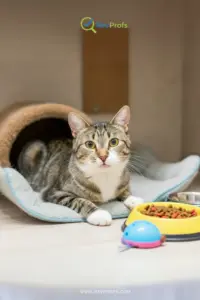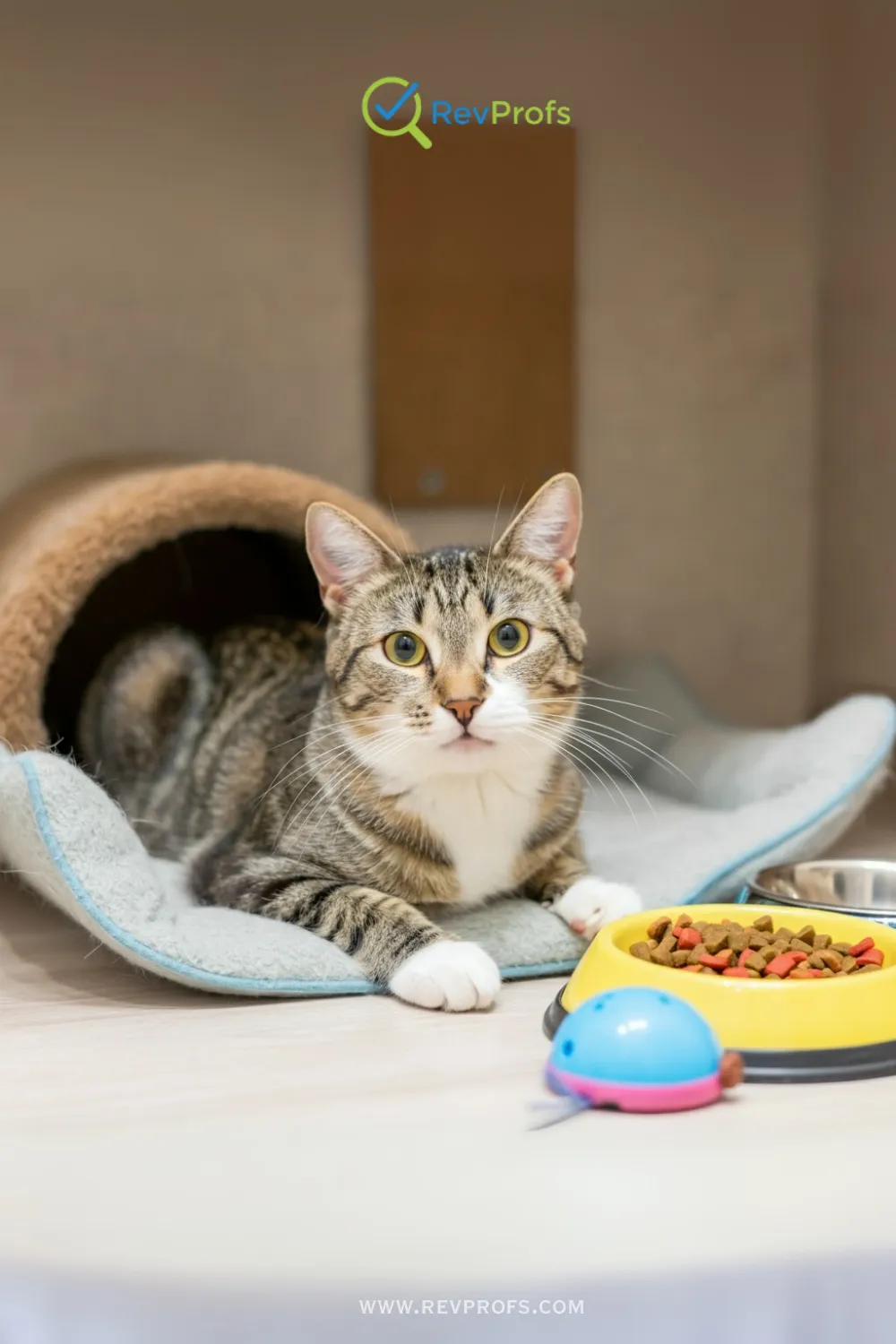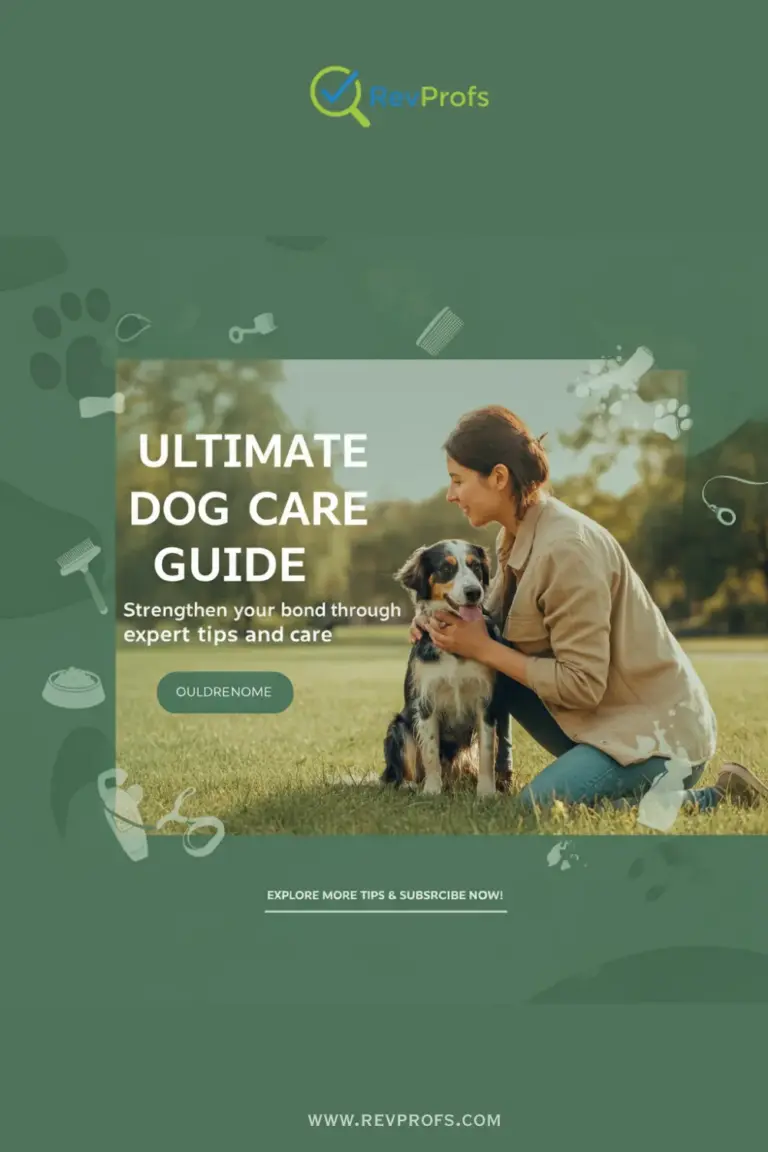The Ultimate Guide to Cat Care for a Happy, Healthy Feline
Bringing a cat into your home is one of life’s great joys. These fascinating, independent, and affectionate creatures enrich our lives in countless ways, from their soothing purrs to their playful antics. Whether you’re welcoming your very first kitten or are a seasoned cat parent, providing the best possible care is the foundation for a long, happy, and healthy relationship with your feline friend. Proper cat care is about more than just filling a food bowl; it’s a commitment to understanding and meeting their unique needs, ensuring they feel safe, loved, and stimulated.
This comprehensive cat care guide is designed to be your go-to resource for everything you need to know. For new owners, it will demystify the initial stages of pet parenthood, covering everything from kitten care to essential supplies. For experienced owners, it offers a chance to deepen your knowledge, refine your routines, and perhaps find solutions to long-standing cat behavior problems.
A well-cared-for cat is a happy cat. When their physical, emotional, and instinctual needs are met, cats thrive. They are more likely to be confident, less prone to stress-related behaviors, and form stronger bonds with their human companions. Good care also has a direct impact on their physical health, reducing the risk of common illnesses and helping you spot potential issues early. By investing time in learning about nutrition, grooming, training, and health, you are making a profound investment in your cat’s overall well-being. This guide will walk you through every aspect, ensuring you have the confidence and knowledge to provide the exceptional care your beloved pet deserves.
Understanding Your Cat’s Needs
To provide excellent care, you must first understand what makes your cat tick. Cats have a rich inner world and a complex set of needs that go far beyond basic survival. Meeting these needs is the cornerstone of responsible pet ownership.
Physical vs. Emotional Needs
A holistic approach to cat care addresses both the body and the mind. It’s easy to focus on tangible things like food and shelter, but a cat’s emotional well-being is just as crucial for a healthy life.
Physical Needs: These are the essential requirements for a cat’s survival and physical health.
- Proper Nutrition: A balanced diet appropriate for their age, breed, and health status.
- Fresh Water: Constant access to clean, fresh water.
- Safe Shelter: A secure, comfortable, and warm place to rest and feel protected.
- Litter Box: A clean and accessible place to eliminate. The general rule is one litter box per cat, plus one extra.
- Veterinary Care: Regular check-ups, vaccinations, and prompt attention to illness or injury.
- Exercise: Daily opportunities for physical activity to maintain a healthy weight and strong muscles.
- Grooming: Assistance with keeping their coat, claws, and teeth in good condition.
Emotional Needs: These needs are centered around a cat’s mental and psychological health. A failure to meet them can lead to stress, anxiety, and cat behavior problems.
- Safety and Security: Cats need to feel safe in their environment. This means having hiding spots, vertical spaces to perch on, and a predictable routine.
- Social Interaction: While some cats are more independent than others, most benefit from positive interaction with their owners. This can include petting, playing, or simply being in the same room.
- Mental Stimulation: Cats are intelligent predators. They need outlets for their minds, which can be provided through cat toys, puzzle feeders, and interactive play.
- Territorial Integrity: Cats are territorial. They need to feel that their space is their own. Respect their favorite spots and provide scratching posts to allow them to mark their territory constructively.
- Instinctual Outlets: Provide opportunities for them to express natural behaviors like scratching, climbing, hunting (through play), and hiding.
Breed-Specific Care Considerations
While all cats share fundamental needs, their breed can influence their temperament, energy levels, grooming requirements, and predisposition to certain health conditions. For example:
- High-Energy Breeds: Bengals, Abyssinians, and Siamese cats are known for their high energy and intelligence. They require more playtime and mental stimulation to prevent boredom and destructive behavior.
- Long-Haired Breeds: Persians, Maine Coons, and Ragdolls need daily grooming to prevent their fur from matting. These cat grooming tips are essential for their comfort and health.
- Brachycephalic (Flat-Faced) Breeds: Persians and Himalayans can have breathing difficulties and dental issues due to their facial structure. They may also need their faces cleaned regularly to prevent skin fold infections.
- Hairless Breeds: Sphynx cats don’t have fur to absorb their skin oils, so they require regular bathing to keep their skin healthy. They also get cold easily and need warm places to snuggle.
Understanding your cat’s breed can help you tailor your care approach, but remember that every cat is an individual. Pay attention to your own cat’s unique personality and preferences.
Creating a Safe Home Environment
“Cat-proofing” your home is a critical first step. Cats are curious explorers, and their safety depends on you removing potential hazards.
- Secure Windows and Balconies: Ensure all windows have secure screens and that balconies are enclosed or supervised.
- Toxic Plants: Many common houseplants are toxic to cats. Research any plants you have and remove any that are dangerous, such as lilies, tulips, and oleander.
- Household Chemicals: Store cleaning supplies, antifreeze, and other chemicals in secure cabinets.
- Electrical Cords: Keep cords tidy and out of reach, or use cord protectors to prevent chewing.
- Small Objects: Keep small items like rubber bands, strings, needles, and small toys put away, as they can be choking hazards or cause intestinal blockages if swallowed.
- Safe Spaces: Every cat needs a “base camp”—a quiet room or area with their food, water, litter box, and a comfy bed. They also need hiding spots like cardboard boxes or covered beds where they can retreat when they feel overwhelmed.

Cat Nutrition: What to Feed Your Feline Friend
Nutrition is one of the most critical components of cat health care. As obligate carnivores, cats have specific dietary requirements that are very different from humans or dogs. The best cat food is one that meets these needs and supports their overall health.
Types of Cat Food
The cat food aisle can be overwhelming. Here’s a breakdown of the main types to help you make an informed choice.
- Dry Food (Kibble): This is the most convenient and cost-effective option. It can be left out for free-feeding and has a long shelf life. Some dry foods are formulated to help clean teeth. However, dry food has a very low moisture content, which can be a concern for cats who don’t drink enough water, potentially contributing to urinary tract issues.
- Wet Food (Canned): Wet food has a high moisture content, which is excellent for hydration and urinary health. It is often more palatable to picky eaters and typically higher in protein and lower in carbohydrates than dry food. The downside is that it’s more expensive and perishable once opened.
- Raw Food: Proponents of raw diets argue that it mimics a cat’s natural diet. These diets can consist of commercially prepared raw food (frozen or freeze-dried) or homemade preparations. While it can lead to a healthier coat and better digestion for some cats, it carries risks of bacterial contamination (like Salmonella and E. coli) for both the cat and the humans in the household. It requires careful handling and preparation.
- Homemade Food: Preparing your cat’s food at home gives you complete control over the ingredients. However, it is extremely difficult to create a nutritionally complete and balanced diet without expert guidance. If you choose this route, you must consult with a veterinary nutritionist to avoid serious nutritional deficiencies.
Many owners find that a combination of wet and dry food works best, offering the benefits of both.
Feeding Schedules by Life Stage
A cat’s nutritional needs change as they age.
- Kitten Care (Up to 1 year): Kittens are growing rapidly and need a diet high in calories, protein, and other nutrients. They should be fed a high-quality kitten formula multiple times a day. Up to six months, they may need three to four small meals. From six months to a year, this can be reduced to two to three meals.
- Adult Cat (1-7 years): Most adult cats do well with two meals per day. The amount of food depends on their size, activity level, and whether the food is wet or dry. Follow the feeding guidelines on the packaging as a starting point and adjust as needed to maintain a healthy weight.
- Senior Cat (7+ years): Senior cats are often less active and may have a slower metabolism, so they may need fewer calories to avoid obesity. Some seniors develop health issues like kidney disease or arthritis and may benefit from a therapeutic diet prescribed by a vet. It’s also important to monitor their appetite and weight, as a decrease can signal an underlying health problem.
Recommended Supplements & Vitamins
A high-quality, commercially prepared cat food labeled “complete and balanced” should provide all the necessary nutrients for a healthy cat. In most cases, supplements are not needed and can even be harmful if given in excess. However, there are situations where a vet might recommend them:
- Omega-3 Fatty Acids (Fish Oil): Can help with skin conditions and reduce inflammation associated with arthritis.
- Probiotics: May be recommended to support digestive health, especially after a course of antibiotics.
- Glucosamine and Chondroitin: Often used to support joint health in cats with arthritis.
Never give your cat any supplements without first consulting your veterinarian.
Foods to Avoid
Many human foods are toxic to cats. Keep these out of reach:
- Onions, Garlic, Chives: Can damage red blood cells.
- Chocolate: Contains theobromine, which is toxic to cats.
- Alcohol: Can cause intoxication, coma, and death.
- Caffeine: Found in coffee, tea, and soda; can be fatal.
- Grapes and Raisins: Can cause acute kidney failure.
- Xylitol: An artificial sweetener found in many products; can cause liver failure.
- Dog Food: While a small amount won’t hurt, dog food lacks the specific nutrients cats need, like taurine.
Grooming & Hygiene: Keeping Your Cat Clean and Comfortable
Cats are famously fastidious groomers, but they still need our help to stay in top condition. Regular grooming is not just about looking good; it’s an essential part of cat health care and a great way to bond.
Bathing Frequency
Most cats rarely, if ever, need a full bath. Their tongues are equipped with tiny spines that act like a comb, and they spend a significant portion of their day grooming. However, a bath might be necessary if they get into something sticky or toxic, have a skin condition that requires medicated shampoo, or are unable to groom themselves properly due to age or illness. If you do need to bathe your cat, use a shampoo specifically formulated for felines and make the experience as calm and quick as possible.
Brushing Techniques
Brushing is one of the most important cat grooming tips. It removes loose hair, prevents matting, reduces hairballs, and distributes skin oils.
- Short-Haired Cats: A weekly brushing with a rubber curry brush or a fine-toothed comb is usually sufficient.
- Long-Haired Cats: These cats need daily brushing with a slicker brush and a steel comb to prevent painful mats from forming. Pay special attention to areas where matting is common, like behind the ears, under the legs, and on the belly.
- Technique: Start with short, gentle strokes in the direction of hair growth. Make it a positive experience by offering treats and praise.
Nail Trimming Guide
Indoor cats need their nails trimmed every few weeks to prevent them from becoming overgrown, which can be painful and lead to them getting caught in furniture or carpets.
- Get the Right Tools: Use a pair of nail clippers designed for cats.
- Make Them Comfortable: Choose a quiet time when your cat is relaxed. Hold them gently in your lap.
- Expose the Nail: Gently press on the top of the paw pad to extend the claw.
- Clip Just the Tip: Only trim the white, translucent tip of the nail. Avoid the “quick,” the pink part of the nail that contains blood vessels and nerves. Cutting the quick is painful and will cause bleeding.
- One Paw at a Time: If your cat is nervous, don’t force it. Trim one or two nails and try again later. Reward them with a treat afterward.
Dental Care Routine
Dental disease is incredibly common in cats and can lead to pain, tooth loss, and even systemic health problems.
- Brushing: The gold standard for dental care is daily brushing with a cat-specific toothpaste and a small, soft-bristled toothbrush or finger brush. Start slowly and make it a positive experience.
- Dental Treats and Diets: Special dental treats and foods can help reduce plaque and tartar buildup.
- Professional Cleanings: Your cat will need regular professional dental cleanings under anesthesia at the vet’s office. Your vet will recommend a schedule based on your cat’s individual needs.
Training & Socialization: Shaping a Well-Behaved Cat
Training a cat is often seen as a challenge, but with patience and the right techniques, cats can learn a great deal. Training provides mental stimulation and can help resolve common cat behavior problems.
Basic Obedience Commands
Using positive reinforcement (treats, praise, and toys), you can teach your cat commands like:
- Come: Say “come” and reward your cat with a high-value treat when they approach you.
- Sit: Hold a treat over their head. As their nose goes up, their rear end will naturally go down. The moment they sit, say “sit” and give them the treat.
- High-Five: Once they know “sit,” hold a treat in your closed fist. When they paw at your hand to get it, say “high-five” and reward them.
Keep training sessions short and fun—just a few minutes at a time.
Crate & House Training
Litter Box Training: Most kittens learn to use a litter box by watching their mother. For a new kitten, the process is usually simple.
- Show them the litter box as soon as they arrive.
- Place them in the box after meals and naps.
- Keep the box clean. Cats are very clean animals and may avoid a dirty litter box.
- If accidents happen, clean them with an enzymatic cleaner to completely remove the odor, which prevents them from returning to the same spot.
Crate Training: Getting your cat comfortable with a carrier (or crate) makes vet visits and travel much less stressful.
- Leave the carrier out in a main living area with the door open.
- Place a comfy blanket, toys, and occasional treats inside.
- Let your cat explore it on their own terms. The goal is for them to see it as a safe, comfortable space, not a prelude to something scary.
Socialization Tips
Socialization is the process of introducing your cat to new sights, sounds, and experiences in a positive way. The key socialization window for kittens is between 2 and 7 weeks of age, but it’s a lifelong process.
- Introduce New People: Have guests offer your cat a special treat or engage them in play. Don’t force interactions.
- Introduce Other Pets: Introductions should be slow and supervised. Use scent swapping (exchanging blankets) first, then visual contact through a baby gate, before allowing full contact.
- Positive Experiences: Associate new things with positive rewards. For example, turn on the vacuum cleaner in another room for a few seconds and give your cat a treat.
Behavioral Issue Solutions
Many common behavioral problems stem from unmet needs.
- Inappropriate Scratching: Provide multiple sturdy scratching posts (both vertical and horizontal) with different materials (sisal rope, cardboard). Encourage their use with catnip or by playing near them.
- Litter Box Avoidance: First, rule out any medical issues with a vet. Then, check the litter box itself. Is it clean? Is it large enough? Do they like the litter type? Is it in a quiet, low-traffic area?
- Aggression: Aggression can be caused by fear, pain, or overstimulation. Consult a vet to rule out medical causes. For play aggression, redirect their attention to a toy—never use your hands as toys.
Exercise & Mental Stimulation: A Happy Cat is a Busy Cat
A bored cat is often a mischievous cat. Providing both physical exercise and mental enrichment is vital for your cat’s well-being and helps prevent obesity and behavior problems.
Daily Exercise Needs by Breed
Activity levels can vary, but most cats need at least 15-30 minutes of interactive playtime each day.
- Active Breeds (e.g., Bengal, Siamese): May need 30+ minutes of vigorous play, split into multiple sessions.
- Less Active Breeds (e.g., Persian, Ragdoll): May be content with shorter, less intense play sessions.
Watch your cat’s cues. When they start to pant or lose interest, it’s time for a break.
Indoor & Outdoor Activities
- Indoor Play: Interactive toys like wand toys (“feather on a stick”) are fantastic for simulating a hunt. Laser pointers can be fun, but always end the session by landing the dot on a physical toy the cat can “catch” to avoid frustration.
- Outdoor Access: If you can provide safe outdoor access, it can be very enriching. A “catio” (an enclosed outdoor patio) is a great, safe option. Leash-walking can also work for confident, well-trained cats. Unsupervised outdoor access is generally not recommended due to risks from cars, predators, and diseases.
Mental Enrichment Games
Keep your cat’s mind sharp with these ideas:
- Puzzle Feeders: These toys require your cat to work to get their food or treats, engaging their problem-solving skills.
- Cat Toys: Rotate their toys every few days to keep things interesting. Toys that mimic prey, like mice filled with catnip, are often a big hit.
- “Hunting” for Food: Hide small piles of kibble or treats around the house for your cat to find.
- Training Sessions: As mentioned earlier, teaching your cat new tricks is excellent mental exercise.
- Bird TV: Set up a bird feeder outside a window where your cat can watch.
Cat Health & Veterinary Care
Proactive cat health care is about partnership with your veterinarian to prevent illness and catch problems early.
Vaccination Schedule
Vaccinations are crucial for protecting your cat from contagious and deadly diseases.
- Core Vaccines: These are recommended for all cats and include rabies, feline panleukopenia (distemper), feline herpesvirus, and calicivirus.
- Non-Core Vaccines: These are recommended based on your cat’s lifestyle and risk of exposure. The most common is the vaccine for Feline Leukemia (FeLV), which is often recommended for cats who go outdoors or live with an FeLV-positive cat.
Your vet will create a vaccination schedule tailored to your cat’s needs, starting when they are a kitten.
Common Illnesses & Early Signs
Cats are masters at hiding pain and illness. Be vigilant for subtle changes in their behavior.
- Urinary Tract Issues: Straining to urinate, frequent trips to the litter box, urinating outside the box, crying while urinating. This can be a medical emergency, especially in male cats.
- Kidney Disease: Increased thirst and urination, weight loss, poor appetite.
- Diabetes: Increased thirst and urination, increased appetite with weight loss.
- Dental Disease: Bad breath, drooling, difficulty eating.
- Hyperthyroidism: Weight loss despite a ravenous appetite, hyperactivity.
If you notice any of these signs, contact your vet immediately.
Parasite Prevention
- Fleas and Ticks: All cats, even indoor-only ones, should be on a monthly preventative medication. Fleas can be brought inside on your clothes or by other pets.
- Heartworm: While less common in cats than in dogs, heartworm disease is serious and often fatal. Prevention is key.
- Intestinal Parasites: Roundworms, hookworms, and tapeworms are common. Your vet will recommend a deworming schedule.
Emergency Tips
- Know Your Vet’s Number: Keep your vet’s phone number and the number for a 24-hour emergency animal hospital handy.
- Pet First-Aid Kit: Have a basic first-aid kit with gauze, antiseptic wipes, and other essentials.
- Recognize an Emergency: Difficulty breathing, uncontrolled bleeding, seizures, inability to urinate, or ingestion of a known toxin are all emergencies that require immediate veterinary attention.
Traveling With Your Cat
While most cats prefer the comforts of home, sometimes travel is unavoidable. Planning ahead can make the experience safer and less stressful for everyone.
Car Travel Safety
- Always Use a Carrier: A loose cat in a car is a major distraction and a safety hazard. Secure the carrier with a seatbelt or place it on the floor behind a front seat.
- Keep it Cool: Never leave your cat alone in a parked car, as temperatures can rise to dangerous levels very quickly.
- Litter Box Breaks: For long trips, you’ll need to offer a litter box. A disposable litter box can be a convenient option.
- Food and Water: Withhold food for a few hours before the trip to prevent car sickness. Offer small amounts of water during stops.
Pet-Friendly Travel Tips
- Air Travel: Check with the airline well in advance about their pet policies. Some allow small cats in a carrier under the seat in the cabin. This is generally less stressful than flying in cargo. You will likely need a health certificate from your vet.
- Accommodations: When booking hotels, always confirm their pet policy. Many hotels that are “pet-friendly” have size or breed restrictions.
- Bring a Piece of Home: Pack your cat’s favorite blanket or toy to provide a familiar scent in a new place.
- Identification: Ensure your cat is microchipped and wearing a collar with an ID tag with your current contact information.
Your Journey in Cat Care
Becoming a knowledgeable and attentive cat parent is a journey, not a destination. By focusing on your cat’s complete well-being—from their physical health and nutrition to their emotional and instinctual needs— you build a bond of trust and affection that will last a lifetime. This cat care guide provides a foundation, but the most important expert on your cat is you. Pay attention, be patient, and cherish every moment with your wonderful feline companion.
Ready to learn more? Explore our other guides on specific topics like kitten care and advanced litter box training. Subscribe to our newsletter for the latest tips and updates, and feel free to book a consultation with one of our cat care experts if you need personalized advice. Don’t forget to share this guide with fellow cat lovers in your life!
Ready for the Next Step?
Your pet's journey doesn't end here. Explore our expert guides to ensure they get the best care at every stage.
Puppy & Dog Care
From choosing the right food to understanding their behavior, our dog care guides cover everything you need to know.
Explore Dog GuidesGear & Product Reviews
Find honest, in-depth reviews on the latest pet gear, from smart collars to durable toys, and make informed decisions.
See All Reviews



